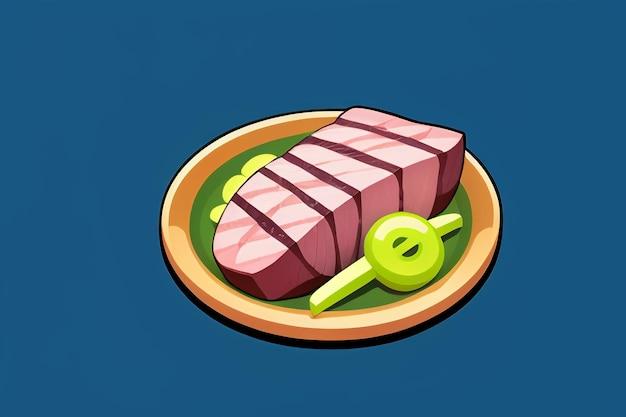Welcome to our blog post on the curious and somewhat alarming topic of rotten meat. In this piece, we will delve into the telltale signs that indicate when your meat has gone bad, as well as the risks associated with consuming spoiled meat. Whether you’ve ever encountered a foul-smelling package of beef or questioned the safety of that slightly discolored steak, we’ve got you covered with all the information you need to know.
The freshness and quality of meat are crucial for both taste and, more importantly, our health. While it’s not a pleasant topic to discuss, understanding the signs of spoiled meat is essential knowledge that can help prevent potential foodborne illnesses. Join us as we uncover the answers to questions like “What does rotten meat taste like?” and “How do you know if meat is rotten?” So, let’s dive right in and get to the meaty details!
What Does Rotten Meat Taste Like
How to Recognize the Unpleasant Taste of Rotten Meat
Nothing ruins a meal faster than biting into a piece of meat that has seen better days. We’ve all had that moment of hesitation when we question the quality of our meat. So, what does rotten meat taste like? Allow me to guide you through the unappetizing journey of discovering the foul flavors that come with spoiled meat.
The Unmistakable Stench of Rot
When meat goes bad, the first warning sign is its pungent odor. It’s as if the meat is desperately trying to alert your olfactory senses of its deteriorating condition. Expect your nose to be greeted with an overwhelming stench that can only be described as a blend of putrid garbage and forgotten gym socks. Trust me, you won’t be mistaking this aroma for anything pleasant anytime soon.
A Flavor That Lingers Forever…or at Least Too Long
If the smell alone doesn’t deter you, the taste of rotten meat certainly will. Imagine taking a bite of something that once had the potential to be tender, juicy, and savory, but has now transformed into a nauseating disaster. The taste is a medley of bitterness, sourness, and an overall sensation of decay. You’ll likely be left with a lingering aftertaste that no amount of mouthwash can wash away.
Texture Woes: Slimy, Squishy, and All Around Unpleasant
As if the odor and taste weren’t bad enough, the texture of rotten meat adds another layer of horror to the experience. Expect sliminess, as the meat’s protein structure starts to break down. This slimy texture, combined with a squishy consistency, creates a truly revolting mouthfeel. It’s an exceedingly unpleasant sensation that is sure to make you regret your decision to take that ill-fated bite.
How to Avoid the Rotten Meat Roulette
Now that you know what rotten meat tastes like, it’s crucial to learn how to prevent such culinary disasters. Here are a few tips to keep your taste buds safe and your meals delightful:
1. Check the Date, My Mate!
Always check the expiry date on meat packaging. Don’t gamble with meat that’s past its prime. Trust in the numbers, and let your taste buds be forever grateful.
2. Smell the Success
Give your meat a good sniff before cooking it. If you detect any off-putting odors, it’s best to bid adieu to that particular piece of protein. Your nose knows best!
3. Trust Your Instincts
If something about the meat seems off, trust your gut feeling. Your intuition might save you from a gastronomic disaster. Don’t ignore those warning signals your brain is sending your way.
Save Your Taste Buds from Torture!
Rotten meat is an experience best left avoided. It’s an offensive assault on our senses that is best sidestepped entirely. Remember to trust your senses, exercise caution, and stay vigilant when it comes to the freshness of your meat. After all, enjoying a delicious meal is one of life’s greatest pleasures, and nothing should come between you and an extraordinary culinary experience.
FAQ: What Does Rotten Meat Taste Like
Welcome, meat enthusiasts! If you’re curious about the taste of rotten meat, you may be wondering about several related questions. Don’t worry, we’ve got you covered! In this FAQ-style blog post, we’ll dive deep into the depths of spoiled meat and answer all your burning questions. So, let’s jump right in!
How Long is Raw Meat Good in the Fridge
Raw meat is generally safe to consume if stored properly in the refrigerator. However, it does have a limited shelf life. For optimal freshness, we recommend consuming raw meat within 1 to 2 days of purchase or before the expiration date mentioned on the packaging. Be sure to store it in a sealed container, away from other foods, to prevent cross-contamination.
Is Meat Still Good if It’s Brown
The color of meat can change naturally due to exposure to oxygen. While brown meat may not look as appetizing, it doesn’t necessarily mean it’s spoiled. However, if the meat has an off smell or slimy texture in addition to the color change, it’s best to toss it out. Remember, it’s always better to be safe than sorry when it comes to your taste buds.
What Does Rancid Smell Like
Ah, the infamous smell of rancid meat! Picture this: a combination of sour milk, smelly socks, and a dumpster on a hot summer day. Yes, it’s as unpleasant as it sounds! Rancid meat emits a putrid odor that will surely make your nose recoil in horror. If you encounter such a smell, it’s best to dispose of the meat immediately and save your olfactory senses from further distress.
How Can You Tell if Steak is Spoiled
When it comes to steak, the look and smell can tell you a lot. If your once juicy and vibrant steak has turned dull and gray, it’s a clear sign of spoilage. Additionally, if the steak has a strong, unpleasant odor or a slimy texture, it’s time to bid it farewell. A good steak should excite your taste buds, not leave them feeling disappointed.
What is the Smell of Off Meat
The smell of off meat can best be described as a pungent mix of ammonia, sulfur, and decay. Imagine giving your nose a front-row seat to a circus of unpleasant odors. If the meat smells funky, overpowering, or simply “off,” it’s an obvious indication that something has gone awry. Trust your sense of smell – it’s your best defense against consuming spoiled meat.
What Happens if You Eat Spoiled Meat
Eating spoiled meat is like playing a dangerous game of food roulette. The consequences can range from a mild upset stomach to a severe case of food poisoning. Symptoms often include nausea, vomiting, diarrhea, abdominal pain, and, in some cases, even fever. To avoid these unfortunate experiences, it’s best to steer clear of the realm of rotten meat altogether.
Can I Eat Meat That Smells Sour
No, dear reader, sour-smelling meat is not your culinary companion. While a hint of tanginess can be delightful in certain dishes, a sour-smelling meat is a glaring sign of spoilage. Trust your instincts and save your taste buds from the inevitable disappointment that awaits those who dare to consume sour meat.
What Does Cooking Rotten Meat Smell Like
Cooking rotten meat is a scent adventure you’d rather avoid. Imagine an amalgamation of burnt hair, a smoky tire fire, and a rotten, forgotten lunchbox. If you catch a whiff of such an aroma while cooking, it’s a strong indication that your meat has gone beyond redemption. It’s time to bid farewell to that ill-fated piece of protein and consider a different culinary adventure.
What Does Spoiled Beef Smell Like
Spoiled beef has a distinctive smell that can be described as a combination of sour notes and old sweaty gym socks. It’s not a delightful fragrance you’d want to encounter in your kitchen. If your beef emits an odor that makes you wrinkle your nose, trust your instincts and toss it out. There are plenty of more aromatic and safe options out there for your culinary endeavors.
How Long After Eating Spoiled Meat Will I Get Sick
Ah, the aftermath of consuming spoiled meat! The timeline for experiencing the consequences of your ill-fated indulgence varies from person to person. In most cases, symptoms of food poisoning from spoiled meat can appear within 2 to 48 hours after consumption. However, keep in mind that some types of foodborne illnesses can incubate for an extended period, leaving you to wonder why you ever engaged in this culinary gamble.
Is Grey Steak Safe to Eat
Grey steak might look like it’s straight out of a black-and-white movie, but unlike classic cinema, it’s not always safe to consume. While the color change alone doesn’t guarantee spoilage, it’s essential to consider other factors. If the texture is slimy, the smell is unpleasant, and the steak has been lurking in your fridge for an extended period, it’s better to bid farewell to its greyish hues and opt for a fresh and flavorful steak instead.
How Do You Know if Beef Meat is Bad
When it comes to beef, your senses can act as loyal food guardians. If the meat has a putrid odor, a slimy texture, or a discolored appearance (beyond the normal aging process), it’s a clear indication that the beef has gone bad. Additionally, any signs of mold or an excessive amount of juice in the packaging are red flags you shouldn’t ignore. Remember, your taste buds deserve only the best.
Does Bad Meat Taste Sour
Bad meat has a knack for leaving a sour taste in your mouth, both literally and metaphorically. While the exact taste may vary depending on the level of spoilage, it can often be described as bitter, metallic, or simply off-putting. Trust your taste buds, and if they encounter any unpleasantness, it’s time to bid adieu to that infamous cut of meat and opt for a safer and more delicious alternative.
Can You Eat Spoiled Meat if You Cook It
Here’s a wise culinary proverb to live by: you can’t save spoiled meat with a generous sprinkle of magic cooking dust. Cooking does not rid meat of bacteria, toxins, or unpleasant flavors that have developed during the journey of spoilage. The heat may disguise a few signs of spoilage, but it’s best not to rely on wishful thinking. Remember, there are countless delightful dishes waiting to be prepared with fresh, high-quality meat.
How Do You Know if Meat is Rotten
Detecting rotten meat is a skill that can save you from culinary catastrophe. Your senses can become the ultimate meat detectives. If your meat smells putrid, has an off-putting color, a slimy texture, or an alarming level of mold growth, it’s a clear sign that your meat has joined the ranks of the rotten. Trust your instincts and never compromise on the quality of the meat you consume.
And there you have it, fellow meat enthusiasts! Armed with this knowledge, you can now navigate the treacherous world of rotten meat with confidence and ensure that your taste buds only experience the best that the culinary universe has to offer. Happy and safe meat indulgence!

